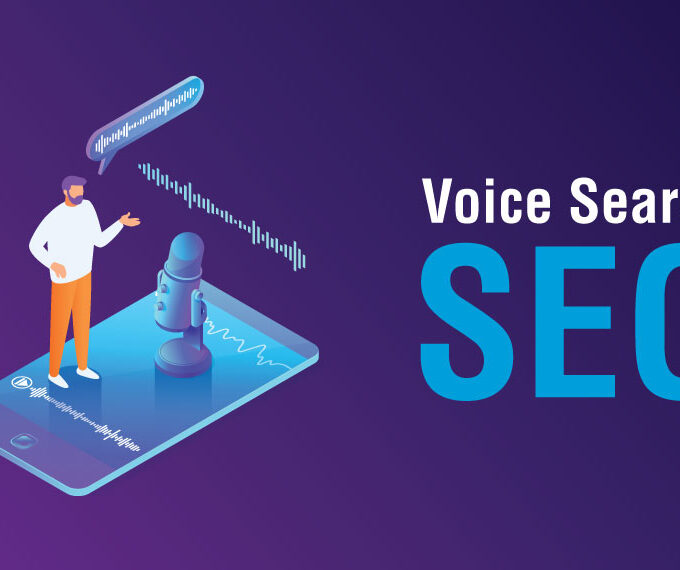Why Search Intent Is Replacing Keywords – And How to Adapt

If you’ve been doing SEO for a while, you’ve probably noticed that the old tactics aren’t working like they used to.
Once upon a time, all you had to do was sprinkle the right keywords across your page, and boom you’d rank on Google.
But in 2026, that approach is dead.
Today, Google’s algorithms are far more intelligent. They don’t just look at what words you use they’re trying to understand why someone is searching. This deeper layer of understanding is called search intent, and it’s reshaping how SEO works.
In this post, we’ll break down what search intent SEO really means, why it’s more powerful than traditional keyword targeting, and how you can adapt your strategy to stay visible and relevant.
What Is Search Intent?
Search intent (also known as user intent) refers to the real reason behind a user’s search query.
When someone types something into Google, they’re not just looking for a set of words they’re looking for a solution, answer, or action.
For example:
- “Best mirrorless cameras 2026” → Commercial intent (they’re researching before buying).
- “Buy Canon EOS R8 online” → Transactional intent (they’re ready to purchase).
- “What is aperture in photography?” → Informational intent (they want to learn).
Google’s job is to serve the most relevant content that matches the intent, not just the keyword.
That means even if your keyword is perfect, your content won’t rank unless it satisfies the user’s true purpose.
The Evolution from Keywords to Intent
1. The Old Way: Keyword-First SEO
For years, SEO experts focused on optimizing around exact keywords.
You’d pick a keyword like “digital marketing agency” and repeat it multiple times across your headings, meta tags, and paragraphs.
This worked because Google’s early algorithms relied heavily on keyword matching.
But it also led to bad experiences keyword-stuffed pages that ranked well but didn’t actually answer the user’s question.
2. The New Way: Intent-Driven SEO
Modern Google algorithms (powered by AI models like BERT, MUM, and Gemini) interpret meaning, context, and relationships.
So, when someone searches “how to get more organic traffic,” Google knows they don’t want the definition of SEO they want strategies that work.
If your content dives deep into practical, intent-matching answers, Google rewards you with higher rankings — even if you don’t use the exact keyword phrase.
Why Search Intent SEO Matters in 2026
1. Google Understands Context Like Never Before
AI-driven search models can now read text the way humans do.
They understand synonyms, context, and even emotion behind a query.
That means your content doesn’t need to be keyword-perfect it needs to be meaning-perfect.
2. Intent Shapes the Buyer Journey
Every search query represents a moment in the customer journey.
If you align your content with that intent, you can guide users from awareness to conversion naturally.
For example:
- Informational: “What is email marketing?” → Blog post or guide
- Navigational: “Mailchimp login” → Tool or brand landing page
- Commercial: “Best email marketing tools” → Comparison article
- Transactional: “Buy email automation software” → Sales page
Mapping your content to each stage builds trust, improves click-through rates, and increases conversions.
3. Intent Optimization Improves Engagement Metrics
When users find exactly what they’re looking for, they stay longer, read more, and bounce less.
Google uses these engagement signals dwell time, bounce rate, scroll depth to decide whether your content truly satisfies intent.
So, optimizing for intent not only improves ranking but also enhances user satisfaction.
How to Adapt to Search Intent SEO
Here’s how you can shift from keyword obsession to intent mastery:
1. Identify Search Intent Behind Every Keyword
Before writing any piece of content, ask:
“What is the user really trying to do with this query?”
Break your keywords into these intent categories:
- Informational: Looking to learn something
- Navigational: Looking for a specific brand, website, or tool
- Commercial: Comparing options before buying
- Transactional: Ready to purchase or take action
You can often detect intent based on the keyword’s phrasing:
- “How to…” → Informational
- “Best…” or “Top…” → Commercial
- “Buy,” “Pricing,” “Near me” → Transactional
2. Align Content Format with Intent
Different intents require different types of content.
| Search Intent | Best Content Type | Example |
|---|---|---|
| Informational | Blog post, guide, tutorial | “How to improve website SEO” |
| Navigational | Homepage, brand page | “Digilab Insights SEO blog” |
| Commercial | Comparison or review | “Ahrefs vs SEMrush: Which SEO tool is better?” |
| Transactional | Landing page, product page | “Buy keyword research software” |
When your content format matches intent, your page feels naturally relevant to users and Google rewards that alignment.
3. Use Semantic SEO to Cover Context
Search intent and semantic SEO work hand in hand.
Instead of writing shallow keyword-based posts, cover the full topic by answering related questions, synonyms, and subtopics.
For example, if your keyword is “SEO strategy 2026,” also include:
- “AI in SEO”
- “Content clustering”
- “Search intent optimization”
- “E-E-A-T ranking factors”
This signals to Google that your article comprehensively addresses the user’s needs boosting your topic authority.
4. Analyze SERPs for Intent Clues
One of the best ways to understand search intent is to look directly at Google’s search results.
Search your target keyword and observe:
- What type of content ranks highest (blog, video, product page)?
- Are there featured snippets, People Also Ask boxes, or videos?
- What tone and structure do top results use?
These results reflect what Google believes best satisfies the intent behind that query. Use them as inspiration for your own structure.
5. Optimize for Experience, Not Just Keywords
Search intent SEO is about serving users, not just search engines.
That means:
- Make your content scannable with subheadings and bullet points.
- Use visuals to simplify complex ideas.
- Write naturally avoid robotic keyword repetition.
- End with a clear next step (guide, product, or CTA) aligned with intent.
When your content genuinely helps people, you earn stronger engagement and repeat visitors the true signs of SEO success.
The Future of Search Intent SEO
As Google integrates more AI-driven understanding into its algorithm, search intent will completely overshadow keyword density.
We’re moving toward a world where:
- AI can predict what users want before they finish typing.
- Content will be ranked by user satisfaction signals, not just backlinks.
- Search will be personalized based on context, history, and behavior.
That means the brands who truly understand and serve intent will dominate.
Conclusion
In 2026, the real SEO winners aren’t those who chase keywords they’re the ones who understand people.
Search intent SEO is about empathy, strategy, and clarity. It’s about asking:
“What does my audience need and how can I deliver it better than anyone else?”
When your content aligns perfectly with that purpose, Google notices.
And so do your readers.
So, the next time you plan your content calendar, don’t just ask what your audience is searching for.
Ask why.
That’s the true secret to SEO success today.

Digilab Insights
Digilab Insights, your trusted source for expert-driven practical tips, proven strategies, and the latest trends in SEO, content marketing, social media, paid ads, and digital growth.
Recent Posts
Local SEO Without a Physical Store: Free Global Freelancer’s Guide
October 24, 2025Voice Search Optimization: How to Rank for Spoken Queries
October 24, 2025Internal Linking Strategy: The Hidden SEO Power Move
October 24, 2025How to Write Meta Titles That Get 2x More Clicks
October 23, 2025Categories
Related Articles
Local SEO Without a Physical Store: Free Global Freelancer’s Guide
If you’re a freelancer, consultant, or online business owner, you’ve probably heard...
ByDigilab InsightsOctober 24, 2025Voice Search Optimization: How to Rank for Spoken Queries
“Hey Google, how do I get more traffic to my website?” That...
ByDigilab InsightsOctober 24, 2025Internal Linking Strategy: The Hidden SEO Power Move
If you’ve been chasing backlinks, keywords, and content updates but still can’t...
ByDigilab InsightsOctober 24, 2025How to Write Meta Titles That Get 2x More Clicks
You can write the best article in the world, but if no...
ByDigilab InsightsOctober 23, 2025










Leave a comment